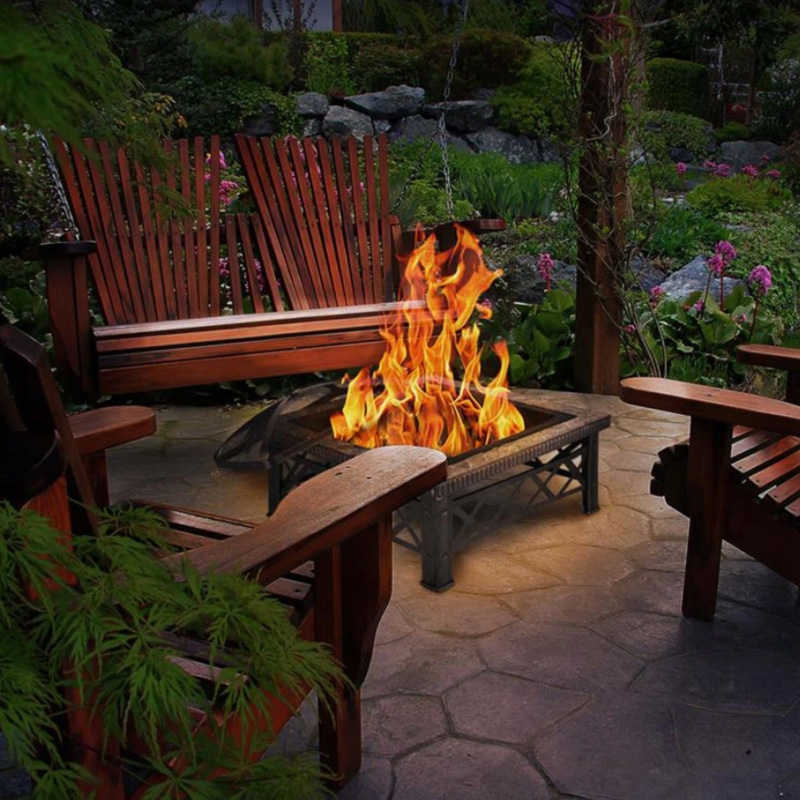
Fire pits are among the most popular backyard living features you'll find today. But, there are many different types and that can lead to a lot of questions. We'll answer some of the most common questions about fire pits, while providing some additional information that will help you plan a great fire feature for your own backyard.
1. How deep does the pit need to be?
For underground fire pits, it is generally recommended that you dig 6 to 12 inches. Make sure the ground is as flat as possible before adding lava or pit glass. If you decide to dig a deeper fire pit, make sure you have some form of ventilation so your fire gets enough air to burn. You may need to use a brazier on top of your stonework to keep the fire high. The higher walls around the fire pit are especially handy if you have small children or pets and want to protect them from the flames. Of course, a higher wall is no substitute for a watchful eye, but it can certainly create an extra level of security for a home.
2. What types of rocks explode in a fire?
Almost any kind of rock can explode -- especially if it's porous and wet. When wet rock heats up, trapped air and water expand rapidly and force the rock to break, sometimes causing it to explode. Some of the most common rocks to avoid in fire pit construction include sandstone, limestone, pumice, gravel, and river stones because of their porosity and tendency to hold water. Hard rocks such as granite, marble or SLATE are denser and therefore less likely to absorb water and explode when heated. Other rocks that can be used safely around and in fire pits include fire-rate bricks, lava glass, lava and cast concrete. This is a fire pit safety area where lava stones can be used. If you have stones in or around your fire pit, be careful when lighting a fire after a rain. Wet stones explode more easily than dry ones. If you use your fire pit regularly, you might even consider covering your fire pit in inclement weather to keep it dry and make yourself safer.
3. Keep your fire pit away from possible danger
Fire safety is of Paramount importance when selecting the location of fire pits. You should always keep your fire pit at least 10 feet away from any trees, overhanging branches, fences, shrubs, or flammable structures on your property. Clear any dry brush around fire pits and always make sure your fire pits comply with local regulations before building. Also, before digging, always call 811 to check underground water and electricity. One of the most common hazards to watch out for is root fires. While you may think you've built the fire far enough away from the tree, it's important to remember that the roots of the tree spread outwards, and building the fire too close to the tree will cause the embers of the roots in your fire pit to burn long after they die. If you decide to put a slate stone fire pit on your deck, you will need to purchase a fire pit specifically for the yard environment. You may even want to consult a contractor to prepare a fireproof surface under your yard fire pit, and you'll need to keep a screen on your fire pit as often as possible to prevent sparks from starting any fires. Wherever you place the fire pit, make sure it blends in well with the flow of people in the yard so that guests and family don't trip. When you enjoy your outdoor fire pit, you should always have safety in mind. Keep your fire burning and always keep a bucket of water nearby so you can put out any stray flames. Make sure your fire is cold before you leave the pit overnight.
4. Gas and wood
Both gas and wood fires have benefits, and while you won't enjoy the classic smell of a campfire, a gas fire makes it easy to start your fire pit and enjoy the night outside, while collecting and lighting wood is time-consuming and laborious every time you want to use your fire pit. However, you should also think about what you plan to do with your fire pit. If you plan to cook, wood fires are hotter and help food cook faster. If you just want to have a warm place to chat with friends or enjoy an evening outside, a gas fire has a steady flame and heat that won't have smoke blowing into your face or your fire going out. You can easily enjoy a full night of entertainment with a simple 20-pound propane tank, which can fuel your gas fire for up to 12 hours. Gas braziers can also be more decorative, using glass stone that does not fade from smoke and soot. If you can't make up your mind, consider a dual-fuel brazier, which can run on both gas and wood. Keep in mind that they tend to cost more and require complex structures to build. Whether you use gas or wood, always remember safety and keep a fire extinguisher handy. Check gas fires regularly for leaks, make sure to add the best rocks to the fire pits, and never add extra fuel to a gas fire to keep you and your guests safe.
Previous: Biodegradable Cutlery of Bagasse and PLA
Copyright:@2020-2021
Comments Please sign in or sign up to post.
0
0 of 500 characters used